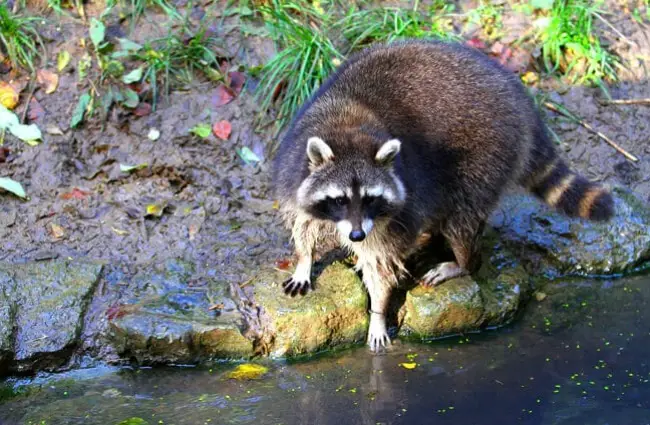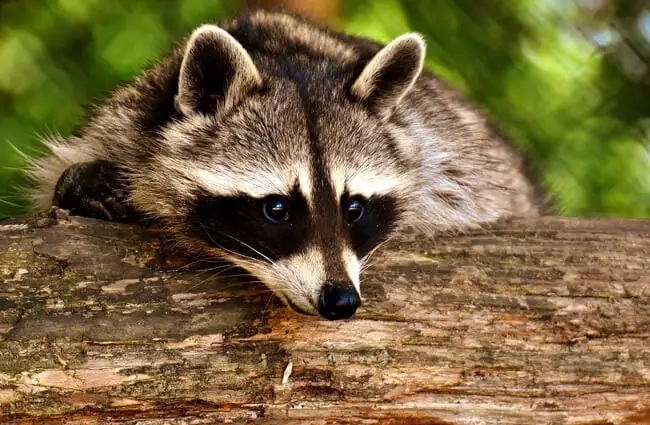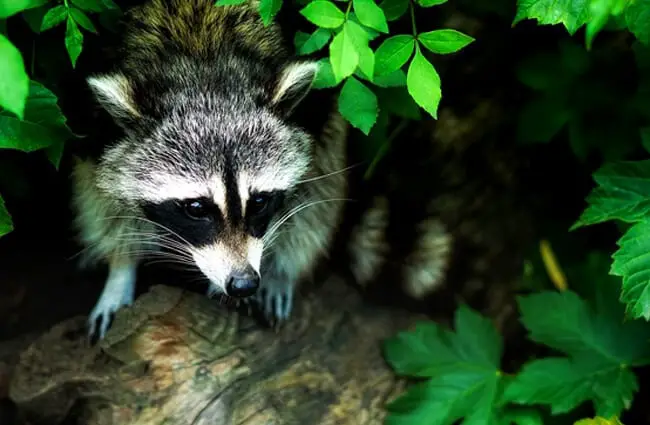The Remarkable Raccoon: A Comprehensive Guide
Few creatures embody adaptability and intelligence quite like the raccoon. Often recognized by its distinctive “bandit mask” and nimble paws, this mammal has captured the human imagination for centuries. Beyond its charming appearance, the raccoon possesses a complex history, a crucial role in its ecosystem, and an intriguing relationship with humans. This guide delves into the world of the raccoon, exploring its biology, behavior, evolution, and cultural significance.

A Natural History
Origins and Evolution
The raccoon’s story stretches back millions of years. Belonging to the family Procyonidae, its earliest ancestors emerged in North America during the Miocene epoch. Fossil evidence suggests these early procyonids were likely smaller and more arboreal than their modern counterparts. The common raccoon, Procyon lotor, as we know it today, evolved more recently, about 0.5 million years ago. Its evolutionary success is tied to its generalist diet and impressive cognitive abilities, allowing it to thrive in a diverse range of environments. The name “raccoon” is derived from the Powhatan word “aroughcoune,” meaning “wood-raccoons.”
Habitat and Distribution
Originally native to North America, the raccoon has demonstrated remarkable adaptability, expanding its range significantly. It now inhabits regions across Canada, the United States, Mexico, and even parts of Europe and Japan—often through human introduction. Raccoons are incredibly versatile when it comes to habitat, thriving in forests, marshes, grasslands, and urban environments. They prefer areas near water sources such as rivers, lakes, and streams, but can survive quite well in drier conditions. The key requirement is the presence of suitable den sites, hollow trees, rock crevices, or even abandoned buildings.

Biology and Behavior
Physical Characteristics
Raccoons are medium-sized mammals, typically weighing between 5 and 20 pounds and measuring 16 to 28 inches in length. Their most distinctive feature is the black mask around their eyes, contrasting with the white fur on their face. This mask is thought to reduce glare, improving vision in low light conditions. Their dense fur provides insulation in cold weather, while their bushy tail provides balance and can also be used for signaling. Perhaps most remarkable are their paws—highly dexterous with five digits, allowing them to manipulate objects with incredible precision. This dexterity is crucial for foraging, feeding, and exploring their environment.
Diet and Foraging
Raccoons are omnivores, meaning they consume both plants and animals. Their diet is incredibly varied, depending on availability and location. They readily feed on fruits, nuts, berries, insects, snails, fish, frogs, eggs, and small mammals. They also are notorious for scavenging, often raiding garbage cans, compost heaps, and pet food bowls. Their foraging behavior is opportunistic and intelligent. They have been observed washing food in water—a behavior initially thought to be for cleaning, but now believed to enhance taste perception by increasing tactile stimulation. They also exhibit caching behavior, storing surplus food for later consumption.

Social Structure and Communication
Raccoons are generally solitary animals, except during mating season and when females are raising their young. However, they can occasionally form small, loosely knit groups, particularly in areas with abundant resources. They communicate through a variety of vocalizations, including whines, growls, chirps, and hisses. Scent marking also plays a crucial role, with raccoons depositing feces and urine to establish territories and communicate with others. Body language, such as tail position and facial expressions, further enhances their communication repertoire.
Reproduction and Life Cycle
Mating and Gestation
Raccoons typically mate in late winter or early spring. Males compete for access to females, engaging in elaborate courtship displays. After a gestation period of around 63 to 65 days, females give birth to a litter of 2 to 5 kits. These kits are born blind and helpless, relying entirely on their mother for care. They remain in the den for several weeks, gradually developing their sight and motor skills.
Raising Young and Independence
The mother raccoon nurses her kits for approximately 4 to 6 months, gradually introducing them to solid food. She also teaches them essential survival skills, such as foraging, climbing, and recognizing potential dangers. Kits typically remain with their mother for about a year, learning from her and gaining independence. After leaving the den, young raccoons establish their own territories and begin the cycle anew.

Ecological Role and Interactions
Raccoons as Seed Dispersers
As opportunistic feeders, raccoons play a role in seed dispersal, consuming fruits and depositing seeds throughout their range. This contributes to forest regeneration and plant diversity.
Predator-Prey Dynamics
Raccoons are preyed upon by larger predators such as foxes, coyotes, bobcats, and owls. They also help control populations of insects, snails, and other invertebrates.
Coexistence with Humans
Raccoons and humans often share the same habitats, leading to both positive and negative interactions. While they can be charming and entertaining to observe, they can also cause damage to property, raid gardens, and transmit diseases such as rabies.
Raccoons and Human Culture
Native American Folklore
Raccoons hold significant cultural importance for many Native American tribes, often appearing in folklore and legends as tricksters, healers, or symbols of resourcefulness.
Popular Culture and Media
Raccoons have become popular figures in cartoons, comics, and other forms of media, often portrayed as mischievous but endearing characters. Rocket Raccoon, from Marvel’s Guardians of the Galaxy, is a notable example.

Practical Considerations
Encountering Raccoons in the Wild
If you encounter a raccoon in the wild, maintain a safe distance and avoid approaching it. Do not feed raccoons, as this can encourage them to become dependent on humans and lose their natural foraging abilities. If a raccoon appears sick or injured, contact your local wildlife authorities.
Raccoons in Urban Areas
To deter raccoons from entering your property, secure garbage cans, remove pet food, and seal off potential den sites. Trim trees and shrubs to eliminate access points.
Caring for Raccoons in Captivity
Caring for raccoons in captivity requires specialized knowledge and resources. They need spacious enclosures with climbing structures, access to water for swimming and washing, and a varied diet. Enrichment activities are crucial to stimulate their intelligence and prevent boredom. Strict biosecurity measures are essential to prevent the spread of diseases.

Fascinating Raccoon Facts
- Raccoons can open latches, doors, and even complex puzzles.
- They have sensitive whiskers that help them navigate in the dark.
- Raccoons can delay implantation of the fertilized egg, allowing them to give birth at a more favorable time.
- They are excellent swimmers and can hold their breath for several minutes.
- Raccoons often wash their food, not to clean it, but to enhance its texture and taste.
The raccoon’s resilience, adaptability, and intelligence have allowed it to thrive in a constantly changing world. From its evolutionary origins to its complex interactions with humans and the ecosystem, the raccoon remains a captivating and endlessly fascinating creature. Understanding this remarkable animal allows us to appreciate its ecological importance and to coexist peacefully with it in our shared environments.

![Red Angus Closeup of a beautiful Red Angus cowPhoto by: U.S. Department of Agriculture [pubic domain]https://creativecommons.org/licenses/by/2.0/](https://animals.net/wp-content/uploads/2020/03/Red-Angus-4-238x178.jpg)




![Red Angus Closeup of a beautiful Red Angus cowPhoto by: U.S. Department of Agriculture [pubic domain]https://creativecommons.org/licenses/by/2.0/](https://animals.net/wp-content/uploads/2020/03/Red-Angus-4-100x75.jpg)

